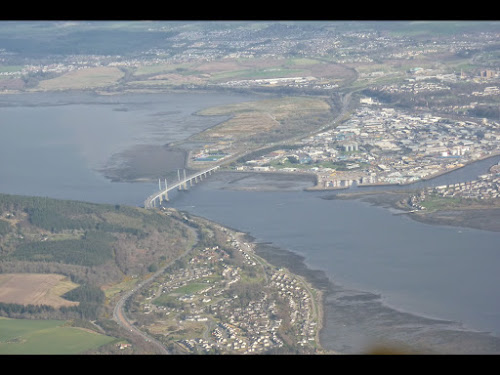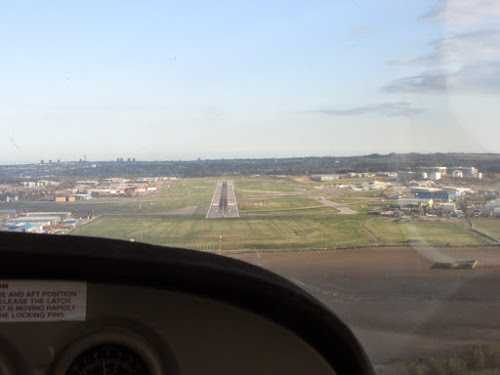Friday 8 May 2015
Friday 1 May 2015
A night in Termonbarry (aka Tarmonbarry) Roscommon County Eire
Last Wednesday evening I was fortunate enough to stay in Keenan’s hotel Tarmonbarry whilst travelling on business. This is an excellent family run facility with good Beer (Smethwick’s as well as the ubiquitous Guinness) and excellent food as well as very friendly helpful staff. For Dinner I enjoyed a starter of Black Pudding on mustard mash and for the main a fine breast of corn fed chicken – all locally sourced. Of course breakfast next morning was the full Irish. A twin room, meals and 3 pints of Beer came to under £93!
Anyway to get to the point. Keenan’s is right beside a canalised part of the River Shannon – Ireland’s longest river. After dinner a walk along the Shannon to the lock shown is only a couple of minutes and it is revealed by a inscription in the lock wall that this lock was constructed in 1845. There is not much in Tarmonbarry besides Keenan’s and a couple of other pubs all beside the road bridge which now crosses the river so I suspect these were once watering holes for boat crews awaiting their turn in the Lock.
There is some modern development, including a marina, immediately beside the river’s western bank. These appear to be fine well-built modern houses however few appeared to be permanently occupied and some were even empty – perhaps a result of Ireland’s recent property bubble.
If you’re ever passing this way I can heartily recommend Keenan’s a place to stay and eat:
http://www.keenanshotel.ie
Getting Wet
Since coming back from my Kayaking trip in March I have joined a local club, Integrate Paddling, in order to gain more experience. As part of their assurance process, Integrate runs a 6 week long coaching course to bring new members up to a standard where it is suitable for them to go on club trips. So for the last few weeks I have been meeting other newbies at Stonehaven harbour between 6 and 8:30. Coaching has been provided by Ed Lawson and Andy Thorburn.
Rather annoyingly I seem to be the least stable member on the water and have now fallen in on every session. So at least this week’s session was helpful as it was rescues with everyone playing the part of rescuer and rescued. We were learning the Hook/Heel Method of rescue
As Rescuer Key Points are:
1. Confirm rescued is not panicking and get them to hold front of your boat
2. Put both yours an theirs paddles out of the way under deck lines.
3. Manoeuvre their boat to bring its bow 90 degrees to yours and onto your deck
4. Pull it in and tip out the water
5. Put boats side by side with their bow at your stern but with cockpits together
6. Get rescuee to move along outside of their boat and put near leg in to cockpit and hook under coaming.
7. Rescuee now reaches across to hold deck lines for both boats and rolls onto the back deck of theirs (and yours if required) keeping the body c ofg as low as possible. Its now a simple process to place the remaining foot in the cockpit and continue the roll to get back in the cockpit.
8. To finish, make sure the rescuee’s spray deck is on and ready to continue before separating
Constant Speed Propeller Training
Constant Speed Propeller Differences Trainig
I have flown multi engine variable pitch props for many hours but single engine is different. At failure for example it won’t feather but instead goes fine.
Last night’s flight was my differences training for using Constant Speed Propellers. In a Mooney M20 our 1hr 30 minute flight took us from Aberdeen to Fife and back over the Cairngorms to Aberdeen. The Mooney is certainly a fast machine!
Key Points
1. The throttle controls manifold pressure (MP) and pitch of the prop. Increasing throttle increases the manifold pressure (the pressure of the flow of fuelto the engine) and the prop tries to turn faster.
2. The prop controller then resists faster RPM by coarsening the blades. This increased pitch and angle of attack of the blades causes more thrust, but also causes more drag, resisting an increase in RPM
So the throttle controls the MP/engine torque/prop pitch, and the prop knob regulates engine/prop RPM.
On Start Up - High RPM (Prop Controller
Power Checks – Run Up to 1800 rpm and follow check list
Pull back Prop Controller 3 x and observe:
1. RPM Drop
2. Manifold Px Drop
3. Oil Pressure Rise (check)
T/O High RPM Cowl Flaps Open
500’ agl Rev up ; Throttle back 25MP aand 2500rpm
Climbing – Increase RPM then MP
Cruise Set Power as Required (Check placards)
Descending – leave prop where it is and reduce MP 1” for every 100’ per minute
PFL and FL extend glide range by moving prop controller fully back
Cowl Flaps:
Open - T/O, Climb and Cct
Closed - Cruise ;Descent
Note high MP reduces Engine Wear (low RPM)
In review of the controllable pitch propeller:
• the RPM control (blue knob) sets prop/engine RPM
• the throttle (black knob) controls prop pitch/manifold pressure unlike a fixed-pitch prop, produces max RPM/power for takeoff
• loss of oil pressure causes fine pitch to stops (high RPM)
• lower cruise RPM causes less noise, smoother through turbulence
• idle throttle causes fine pitch, high drag "plate" airbrake
• higher MP with same RPM causes more torque and p-factor
• oversquare settings are inefficient and overtorque the engine
Dundee from the Mooney
Largo - Fife
Skiving off early on a Friday - Black Isle and Cairngorms 16 April 2015
I’ve found a good way to skive off early on a Friday – offer to take your boss for a flight. 16 April 2015
(All photos in this post by Richard or Ros Gale)
I had planned to take a friend with me on an evening flight after work on Friday. Unfortunately he cancelled due to a last minute emergency. So with a spare seat I spoke to Richard my boss (and coincidentally also a friend) and asked if he wished to come. A keen photographer, he was delighted to get the chance to go over the Cairngorms in the fine weather we had been having of late and asked if Ros, his wife, could also come. Well there was plenty of room and as an aside it meant that Ros would arrive around 3 so we would be able to get away early
We got to the airport for 1600 and were airborne by 1630. My plan was to fly up to the Black Isle then to Beauly and return via Lochnagar to Montrose and Stonehaven. This would give Richard and Ros the chance to view and photograph a range of landscapes. Although Aberdeen was clear there was low cloud (base around 4000ft) over the Cairngorms and on the 1st part of our route out past Insch to Nairn. Staying at 3000ft for the 1st part of the trip we cleared the cloudy are as we reached the coast and transited with Inverness Approach over to the Black Isle which was in glorious sunshine. It was just a month since I was last here though I was then at Sea Level in my Kayak with Zoe Newsam. It was fun to see the same land/seascape from our now lofty position.
Airborne from Aberdeen
Tap O Noth Hill Fort Rhynie
Oh look Windfarm with nothing turning - how much is this costing?
Richard and Ros were a little quiet so I asked if they were OK to discover that they were thoroughly enjoying themselves snapping away. The reason for their lack of chatter simply being their absorption in the photographic opportunities. Earlier in the week Richard had been reading a photography magazine that recommended using manual rather than autofocus for the sharpest of shots. Throughout the flight he left the lens on autofocus and was now discovering that manual was indeed a better option as some of his shots were lost by the camera focusing on ZV’s window rather than the landscape below!
Rigs awaiting work - Cromarty Firth
Chanonry Point and Fort George - I was Kayaking here with Zoe just a month ago
We headed to Beauly from the black Isle and in order to clear the Cairngorms I climbed to 4500 ft before heading to Lochnagar. We transited to Lochnagar via Ben Avon but just as reached Lochnagar we entered cloud. I decided that certain terrain clearance being better than a good photo! Unsurprisingly Richard and Ros concurred. We were in cloud for only 30 seconds or so but we did mis the chance to get good views of Lochnagar. Having said that we did get plenty of other great views as we continued South East towards Glen Clova and Forfar.
Inverness
Loch Ness
Cairngorms - Low cloud becomes a problem
Leaving the Cairngorms, heading towards Forfar
Emerging from the mountains We headed to Montrose to rejoin the Aberdeen Zone via the Stonehaven lane rather than the more direct Loch of Skene route. I chose this route as it offers excellent views of the coast and Aberdeen Harbour and as our clearance was ‘not above 1000ft’ it would give Richard and Ros the chance to get some good shots.
Another one - stationary again!

Aberdeen Harbour
Ships off Aberdeen
Although there was a lot of commercial traffic inbound to Aberdeen we were fed into the visual circuit without delay and landed in glorious sunshine at 1840 hrs. This was a most enjoyable flight. It was a great pleasure to have along 2 passengers so thrilled by the journey that Richard said later it was ‘the perfect start to the weekend – just what I needed after a tough few days’. Indeed Richard has made it quite plain that they would both love to go up again. So at the next available opportunity I am planning on taking Richard and Ros for a flight along the Moray Coast.
























